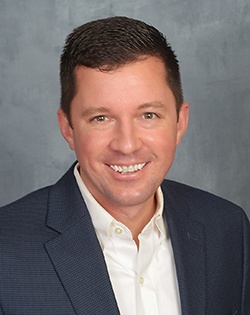

Underwriting Product Manager, Human Services
Philadelphia Insurance Companies (PHLY)
Church Executive: Just how big of an issue is employee theft in churches, really?
Mike Nester: I wouldn’t say it’s one of the larger issues that our churches are dealing with, but it’s one of the easiest to work on. That said, we do see losses; we’ve had more than $1 million in claims over the past four years. So, it’s still sizable.
When you read through some of the claims, it’s kind of a cookie-cutter culprit: one person being in charge of the finances.
CE: Right. So that’s a church’s most vulnerable point / practice related to employee theft?
Nester: Yeah. For example, in one case, a church volunteer treasurer was writing checks for cash on the church’s account and using the money for personal purposes. This happened over a three-year period.
We see this a lot: when a single volunteer is in place, there’s not a lot of controls behind it. The church trusts that this person is handling the finances correctly, so they don’t have checks-and-balances in place, and fraud takes

Vice President, Risk Management Services
PHLY
over.
Another case involves the director of a church/school combo organization misappropriating funds. The director and bookkeeper could sign checks individually, so no countersignatures were required. Reading through this claim, the director had complete control of all finances. At one time, the bookkeeper was going to be out of the office for a few weeks. The pastor asked for extra hands or extra help, and the bookkeeper waived it off, saying it was all covered.
That’s a really relevant example because it shows the lack of transparency.
CE: OK, so how can a church ‘do better’ in protecting its resources against employee theft?
Nester: Religious organizations have this trusting environment that they show to their members, but it also extends to their officers and finance person/treasurer. That’s where they’re most vulnerable: putting one individual employee or volunteer in charge of all the finances.
At a high level, churches need to implement more transparency between the pastor and the treasurer. Although I imagine that most pastors don’t have the financial background to totally understand what’s going on behind the scenes, just being curious about it and engaging with the treasurer goes a long way.
Also helpful: unannounced audits to check in and see how finances are doing. These can be done internally or externally, with an accountant, but the unannounced part is the key.
[W]e know money is a temptation, right? The Church even offers counseling on it; it’s well documented. The irony is that the Church is just as susceptible. — Andrew Shockey

Then — going back to my example from before — if you’re noticing interesting behavior and the treasurer takes a long vacation, that might be a good time to reassign another person to look through the finances. Even if they don’t have the same level of financial expertise, just getting another set of eyes on the financials can be helpful.
Finally, start requiring countersignatures for writing checks on the church’s accounts. In addition to the treasurer, maybe require the pastor or another officer to sign. This will promote accountability and deter fraud.
Andy Shockey: Like Mike was saying, each church is going to be unique in how they’re set up and the resources they have in terms of people power. But our best resource is the discussion of How do you keep this issue in the light? Mike gave you examples of how things can go ‘into the dark’, if you will, if only one person handles the finances — but that’s fixable.
And we know money is a temptation, right? The Church even offers counseling on it; it’s well documented. The irony is that the Church is just as susceptible.
Religious organizations have this trusting environment that they show to their members, but it also extends to their officers and finance person/treasurer. That’s where they’re most vulnerable: putting one individual employee or volunteer in charge of all the finances. — Mike Nester
So, it’s helpful to take that moment and have that conversation — perhaps with an interested third-party, like PHLY — about what can be done. There are lots of reasonable steps that don’t cost anything but are prudent.
And, as Mike said, the occasional unannounced third-party audit of the books is a wise move.
CE: Is there anything else related to employee theft prevention that’s important to include?
Nester: I just want to reiterate that the more involved you are, the more you can deter some of the claims I talked about, where these treasurers have a lot of power. That power can result in losing money for the church.
Shockey: As we said, theft isn’t a leading cause of loss for us as an insurer — but for a church, when and where it does happen, it’s incredibly damaging. Every dollar is vital.
The occurrence of theft or embezzlement causes a lot of pain. It’s a moment when the church’s mission is adjusted to deal with recovery of the assets, rather than on ministry and fellowship. It can really do damage within the congregation.
— Reporting by RaeAnn Slaybaugh


